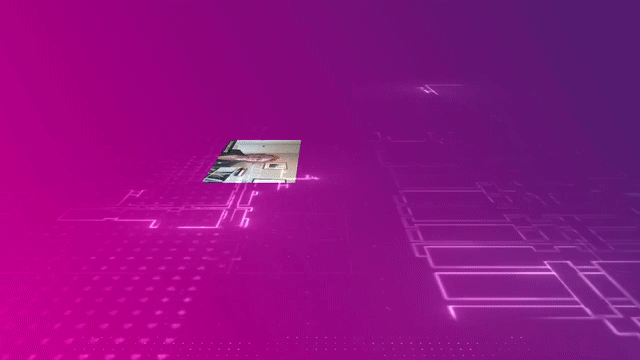Podcast Securing Endpoints in a Work-From-Anywhere World
Reliance on remote work means a need to adapt from a security standpoint, even building devices and endpoints.
By Insight Editor / 23 Dec 2022
By Insight Editor / 23 Dec 2022
The pandemic has accelerated digital transformation to say the least. According to Dhiren Patel, client technologist at Dell Technologies, the reliance on the internet and remote work has drastically increased phishing and supply-chain attacks, making companies’ security postures harder to maintain. Talking to Peter Straight, the security practice leader at Insight Canada, he discusses how Dell’s strategy of securing devices above and below the operating system has evolved. There are now three prongs: manufacturing devices with security, manufacturing devices with built-in security and manufacturing devices with built-on security.
To experience this week’s episode, listen on the player above, watch the conversation below or scroll down to read a complete transcript. You can also subscribe to Insight TechTalk on iTunes, Spotify, Stitcher and Google Play.

Transcript of audio:
[PETER]
Hello, let me introduce Dhiren Patel from Dell. He's a client technologist. I'm Peter Straight, I lead the security practice at Insight Canada. Dhiren, what challenges are client seeing with security in the hybrid world?
[DHIREN]
Yeah, thanks for that Peter, and for the viewers out there that are either watching this, tuning in, as Peter said, my name's Dhiren Patel. I'm one of the client technologists here at Dell. Basically an expert on end-user computing. I have the pleasure to talk to customers across the country and it's really an exciting time.
Going back to your question, Peter, which is really around some of the challenges that we're seeing especially when it comes to hybrid work and security, if you think about what's happened over the last couple of years, the pandemic as a whole has really accelerated organizations' digital transformations. Then you compound the reliance on the internet and remote work.
You're seeing things like a spike in ransomware attacks, email phishing, all sorts of challenges do come up to light. From an IT perspective, if you think about the endpoint, IT DMs often are faced with, "Hey how am I going to deploy those assets? How am I going to make sure that they're secure? How am I going to manage them? How am I going to update them?" There's a laundry list of things that really come to light when you think about some of the challenges. When you look at some of the trends taking it a step further, you know, the cost of breaches is absolutely increasing, but not only that. The frequency of attacks is also increasing.
Then when you think about the threat vectors itself, they're evolving, becoming even more sophisticated. Then you think about security professionals and what's happened from a talent acquisition. You've probably heard about the trends of quiet quitting, the great resignation. The attack surface has increased greatly, whether, hey, it's the endpoint, identity, workload, cloud, application data, there is a bunch of things that organizations need to think about.
[PETER]
Those are so many different things that organizations have to look at. Let me ask you another question. What is Dell doing specifically in the endpoint space to secure workers?
[DHIREN]
Yeah, thanks for that, Peter, and when you think about what Dell's doing, maybe you've heard from your Dell reps or you've seen some of the things that Dell's been doing in this space. Traditionally, we've talked about it being below the OS and above the OS, but I'd say that conversation has evolved quite a bit, and the easiest way to think about that is primarily through three things, and the first is how we build our devices with security. The second is how security is built in and then thirdly, built-on security.
So, let's start with the first one, which is really how we build our devices with security, and it really goes back to our supply-chain assurance and everything we're doing from a supply chain, whether it's how our components are being configured, deployed in Dell factory, the personnel that are working on these devices, the IP, the information, we are doing extensive regulatory work to make sure that our supply chain is rock solid.
The second is how security is built into the devices, and there's multiple different things that come to light here. The first one that I'm going to talk about is SafeID. Dell's talked about SafeID for a long period of time. When you think about trusted platform modules, how Windows kind of manages some of the security protocols there. What Dell is doing is we have a thing called SafeID, which is a dedicated spot away from the processor where some of those end-user credentials are stored.
Say I'm a hacker that's trying to attack at the OS level, now I don't have access to what's going on at the OS, because I can't see some of those end-user credentials, because it's moved away on a dedicated security chip. So, SafeID, added security layer. When you think about our BIOS now, BIOS, basic input output system, probably table stakes for everyone that's listening, but now what we're doing from a BIOS perspective is we have a way to gain visibility and actually see what's lurking in the BIOS layer.
So, not only do we do an on-host verification, we also do an off-host verification. Now say you had a BIOS incident where maybe something happened to that BIOS and you needed to pull forensics or actually go take a look and see what happened at the BIOS. If you're using some of the third-party ecosystem that we have, you're able to go pull the BIOS and do the forensics that you need to do. Then from a device perspective, we have privacy panels, aka SafeScreen, we have SafeShutters.
So, you can remove that black piece of tape, the Post-it Note, whatever you have covering your camera shutter, but we've also taken it a step further, whereby now it's electromechanical, where, as I click start video, it automatically opens up. As I click stop video, it's automatically going to close. Taking it a step further, we're also using contextual-based privacy using some of the camera technology that exists
paired with Dell Optimizer, which is really how Dell is using artificial intelligence and machine learning directly on the endpoints.
So, there are two different things that come to light here. Onlooker detection is one of them. So, say we were working in a coffee shop and someone was creeping over my shoulder over here looking at what I'm working on. With Onlooker Detection, I'm going to get a pop-up saying, hey, an onlooker is detected.
My screen can actually blank out or texturize, and you have an added layer of security there. From a Look Away Detect perspective, say Peter, you and I were collaborating in person and I glance away. My screen will actually dim brightness or turn off to a certain extent, and Look Away Detect is going to protect the battery life as well as the integrity of the data that you're working on.
Then comes SafeData which is really a means to protect your data, meet some of the regulatory requirements, keeping that information secure whether it's in the cloud, either on the endpoint. So, it's really about the ecosystem here. And then lastly, think about safeguarding and how you respond, whether it's preventing detecting, responding and remediating to a security incident. So, using some of the partnerships perhaps with VMware from a Carbon Black perspective, using artificial intelligence from an AV perspective. Secureworks. Now, say you're an organization that had a security incident
and you needed to call in the fire department, you could book a retainer with someone like Secureworks, and they have the expertise to help you out, and then if you wanted to look at having a managed detection and response perspective, we have the tools to help you out there.
So in short, three key areas, built-in security, built-on security and built with security.
[PETER]
Well, thank you for that, because for our customers and our clients that are looking to get more into focus and security, Dell definitely covers a lot of different areas that they can improve their security. So if you'd like to understand more about securing your workers, Insight can help assess your environment and work to enhance your security program.
Thank you.
[DHIREN]
Thanks for the time.
[PETER]
Thank you.

Security Practice Leader, Insight Canada
Peter comes to Insight with 23 years of IT/cybersecurity experience, having held many roles over the years. Most recently, he worked at McAfee, where he led the professional-service team. Peter resides in the Calgary, Alberta area, where he raises his seven children with his wife of 25 years, Nicola. When time permits, he likes to spend as much time outdoors with his family, either gardening, mountain biking, snowboarding, fishing or backpacking.

Client Technologist, Dell
Dhiren is a certified project management professional with a demonstrated history of working in the IT and financial-services industry over the last 15+ years. He is a board member on the Dell Technologies Sales Advisory and Client Innovation Advisory councils. Dhiren holds a University of Toronto Honours Bachelor of Science degree and currently lives north of Toronto, Ontario with his wife and daughter.